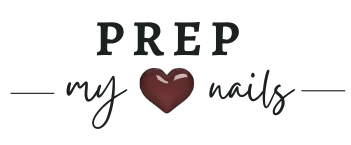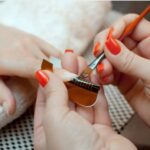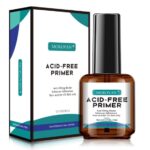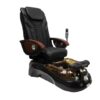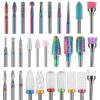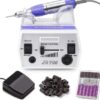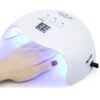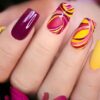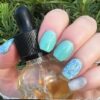Powder-dipped fingernails and acrylic nails aren’t exactly new, but there are enough hashtags to lead you down a rabbit hole if you hunt for inspiration on Instagram. Even though they appear to be the same, there are some significant variations between acrylics and dip nails that you should be aware of before making an appointment.
Powdered dip nails and acrylics have a lot in common, except for the bonding chemicals, which are different in both. Dip nails require a resin-based chemical such as super glue, while acrylic nails require a monomer to form.
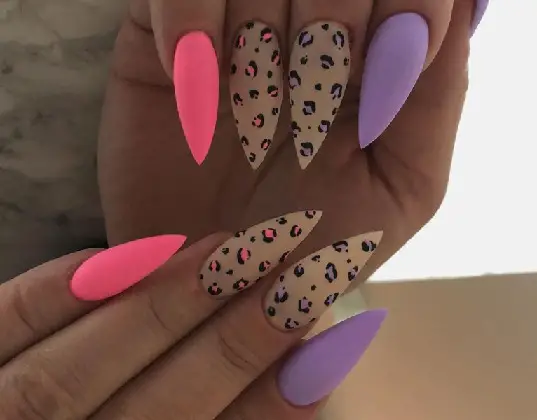
What Is a Nail Activator?
Activator is a liquid used to cure, bind, and dry dip powder in the dip nail system. It’s applied before the very last stage, which is the application of a topcoat. The activator’s primary job is to cure the powder and prepare this for the topcoat swiftly. An activator needs to dry rapidly and not induce a chemical process with the topcoat you’re applying to operate effectively. In the past, women have seen quite a few instances where a dip nail system’s activator and topcoat did not function well together, causing the topcoat to seize and dry up very quickly after being applied on top of the activator. Obviously, that isn’t something you want to happen to your fingernails! As a result, please invest in a high-quality nail dipping system.
What Is Acrylic Liquid?
Polymer powder and liquid monomer are necessary for acrylic manicures. Acrylic liquid, commonly known as a monomer, is acrylic manicures’ active and necessary component. When you mix the ingredients in a small dipping jar, you should get a thick, gel-like mixture (resin) that you may spread over the natural fingernail and allow it to dry before filing down the artificial nail to the appropriate shape and length. Monomers, which are tiny chemical components that react when coupled with substances in the powder, are present in the liquid. To make long fibers, the monomers bind together in a head-to-tail arrangement.
Main Difference
The two-stage liquids (base and activator) function in a distinct chemical mechanism than the one-step liquid (dip powder) (monomer). Dip Powder Activator is an acrylic monomer, which means you can use it to make acrylic nails. On the other hand, the activator is more expensive than the ordinary monomer liquid and arrives in a narrower bottle. You can combine dip powder with a monomer liquid because dip powder is simply a finely ground acrylic powder that you can use to create a smooth, uniform finish. It is, however, more creamy than acrylic and does not necessitate the use of a monomer. That isn’t to say you cannot combine it with a liquid monomer.
What Can You Utilize If You Don’t Have Acrylic Liquid?
If you cannot utilize the recommended liquid monomer, you can experiment with various options for curing your acrylic powder.
Gel Polish
You may cure your acrylic with gel polish, a highly cost-effective and rapid method. All you’ll need is an LED lamp, which you can use together with your polish to set your acrylics strictly within the lamp.
Resin Made Of Polyester
A polyester resin, a polymer with peroxide added to it, can be used. It heals not only well but also quickly and readily at room temperature. It does, however, leave a green tint behind, which many people dislike.
Rubbing Alcohol
In a pinch, rubbing alcohol MIGHT work, but the powder will not adhere, will be lumpy, the color will be wiped off, and the acrylic itself will be fragile. Using this procedure, you may anticipate your acrylic flake to fall off within a day.
Monomer Made At Home
If nothing else appears to work, you may always make your own acrylic liquid. Add one-fourth teaspoon of water and a three-fourth teaspoon of liquid glue to an empty nail polish bottle. Any non-toxic glue should suffice. It is a simple method for binding and curing acrylic powder.
Conclusion
Because acetone is an excellent dissolving chemical and not a monomer, You must only use it to remove artificial nails. Water may help cure various acrylic powders while giving you ample time to shape your acrylic correctly. It’s also gentler on your nails and skin in general; however, it might not adhere as effectively as a monomer. While acrylic powder may be used for dip powder nails, for optimal results, utilize a 2-in-1 dip and acrylic system or a dip powder system.
- Topic: Nail Blog
- Are Polygel Nails Better Than Acrylic?
- How To Shorten Shellac Nails?
- Gel Vs SNS For Nails: Price, Health, Longevity & More
- How To Use A Builder Gel On Natural Nails?
- 8 Types Of Nail Extensions You Should Know About
- These are the Best Nail Extensions For Short Bitten Nails
- How To Tell The Nail Tech What You Want?
- Does Kerasal Work?- Kerasal Nail Treatment Review
- What Is Monomer For Nails?
- Can You Use Any Nail Polish For Stamping?
- Can I Paint My Nails With Stamping Polish?
- What Kind Of Manicure Lasts The Longest?
- Can You Get Gel Nails Done On Short/Bitten Nails?
- How to Shape Coffin Nails in a Hurry?
